How long do Scottish Fold cats live and what does it depend on?
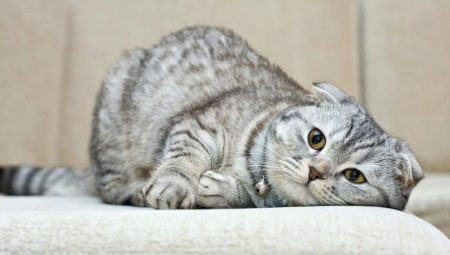
Everyone wants to know how long our pet will stay with us. It is with animals that we have a huge number of pleasant, funny and amusing memories: with some we grew up together, with others we explored the world or just had fun, and with some we already had time to say goodbye. In the presented material you will find information on how long Scottish Fold cats live on average, get acquainted with the reasons for their longevity or, conversely, too short a life.

Average life expectancy at home
Scottish Fold cats have a relatively strong immunity, which allows them to live a significant, in comparison with dogs, period. Under normal household conditions, Scots live an average of 15 years.
If the conditions are favorable: excellent quality feeding, constant care and attention, good heredity, then these animals can live up to 25 years. To achieve this longevity from a cat, it is not enough to feed it well. It is very important to know all the critical and weak sides of this breed, its shortcomings, foods that it does not digest, as well as the most common diseases.
The large, dense and muscular Scottish Fold species are believed to live much longer than their thin-boned and weak-boned counterparts. Here, a very important role is played by genetics and heredity of a particular individual.
To determine the approximate life span of your pet, you should refer to its pedigree. In the event that all of the cat's relatives have died a natural death before the age of 17-20, you can be sure that your pet will be the same long-liver.
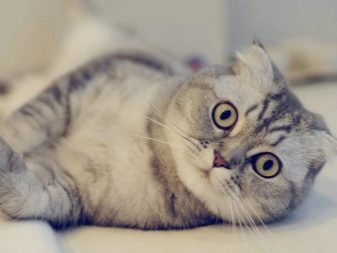

To determine the most likely life span of a newborn pet, simply monitor its behavior. Individuals with better health behave more actively, they are inquisitive, mobile and meow more often in search of mother or food.
Under ideal conditions of care and maintenance, Scottish Folds are capable of overstepping the 33-year-old bar. It is this threshold of life expectancy that was set at the beginning of the 21st century by the Scottish Folds record holders.
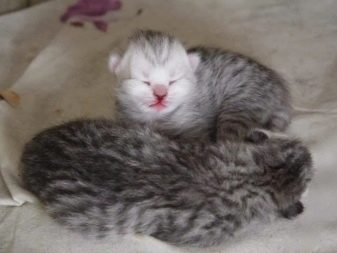
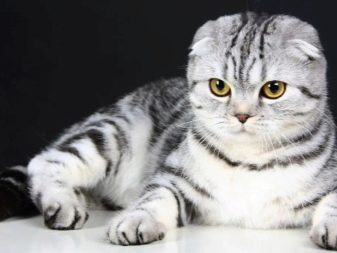
What affects your health?
The Scots, despite their charming appearance, have gentle and delicate health enough for an experienced breeder. In the process of raising Scottish Fold cats, you can meet the following common diseases.
- Skeleton. Outwardly, the Scots seem to be a tough breed of cats with a well-developed skeleton and bones, but this is not so. Bone abnormalities are often found in this breed, in which the bones have a hollow or fragile structure and are extremely prone to breakage and destruction. In addition, this breed has a predisposition to pathologies of the formation of cartilage tissue.
These diseases, as a rule, do not directly affect the life of a young Scotsman, however, they begin to actively manifest themselves in adulthood. Because of what, the pet begins to have problems with walking, running, and hang-ups. In turn, the lack of active games and entertainment leads to the development of obesity and a decrease in muscle mass. All of these diseases can shorten the life of Scottish Folds by 3 or even 4 years.
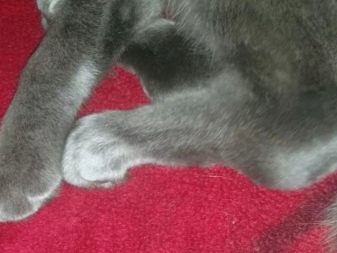
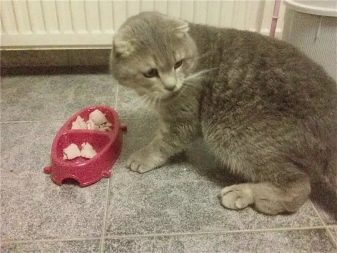
- Nutrition. The Scots, like many other varieties of decorative cats, have a pronounced tendency to obesity. As a rule, this disease is caused by a sedentary lifestyle, unhealthy diet with an excessive amount of fats and carbohydrates, a lack of proteins, as well as valuable vitamins in food. That is why one should treat the animal's diet with such trepidation and buy only the highest quality and freshest food.
Due to obesity, this breed may develop other diseases: liver problems, complications of the cardiovascular system and the gastrointestinal tract.
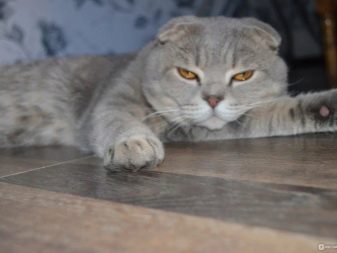

- Hair care... Long-haired Scottish breeds have surprisingly long hair that, without proper regular grooming, can literally interfere with the animal's movement. In addition, the formed wool mats often become a haven for ticks and lice, as well as a hotbed for the development of inflammatory skin diseases.
- Poor grooming of the coat can also lead to physical inactivity (atrophy and weakening of the muscular system) if your pet does not have enough movement.
- Also Scottish Folds are very fond of licking themselves, which leads to swallowing a large amount of long hair. Because of this, real hairballs and seals are often formed in their stomachs, which are then very difficult to remove from the body due to blockages in the passages. This can lead to complications in the gastrointestinal tract: diarrhea, constipation and loss of appetite.
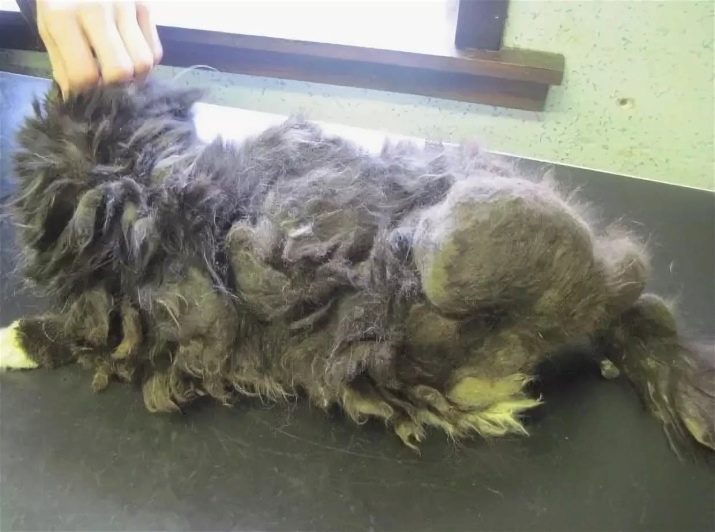
- Hygiene of the ears. Another weakness of the Scots is their amazing ears. These animals have too little fluff and hair in their ears, and the auricles themselves are only seemingly well covered. In addition, harmful insects are often taken into the ears of the animal - ants, midges, ticks and even flies, which can lay their eggs and excrement there. Because of all this, dirt and sulfur accumulate in the ears of the animal very quickly, which can lead to inflammation and complications.
To protect your pet from the onset of such diseases, you should clean the animal's ears with special sticks or cotton pads several times a week.
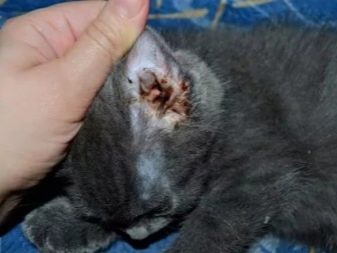
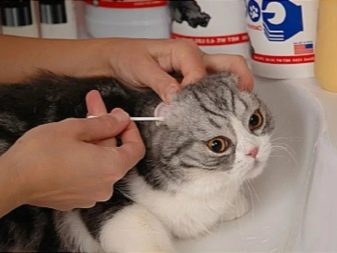
- Heredity. Scottish Folds have been bred through numerous breeding procedures. The breeders endowed this breed with an exceptional appearance, but could not protect the breed from the development of genetic diseases. Most of them are not able to greatly affect the life expectancy of your pet, however, when buying a kitten, you should refer to its passport and data on the diseases and predispositions of its parents.


In addition to the listed diseases, Scottish Folds are also characterized by other, typical for other breeds of cats, diseases: skin (fungal diseases, abscesses, abscesses, abscesses, rashes, allergic reactions), infectious diseases (salmonellosis, rabies, anemia, candidiasis), eye pathologies (dilated pupil, lacrimal pathways, lens opacity), heart disease (hypertrophic cardiomyopathy), and some cancers.


How to prolong life?
Each of us wants our pet to live as long as possible. Below you can find a set of rules and recommendations that will help you keep your pet healthy.
Regular and timely vaccination
You should immediately understand that no matter where the pet is - on the street or at home, it always has a risk of infection. Viruses and microorganisms can enter an apartment in a variety of ways: they can settle on your clothes, enter your apartment through windows, and even through other pets. Vaccinations can help you stop diseases at the very beginning.
Try to apply for such a procedure only to good clinics with an ideal reputation, avoid home vaccinations.
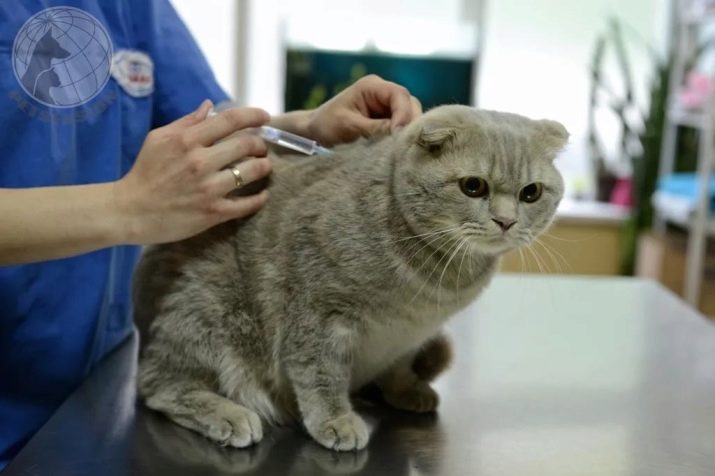
Feeding
It is the most important factor in the long life of absolutely all pets. Nutrition should not only be rich in vitamins, minerals and trace elements, but also be balanced.
- If you have chosen ready-made mixtures and feeds as food for your animal, then these should be premium or super-premium foods. Only in this case you will be completely sure that your pet receives everything it needs for a fulfilling life.
- If you give preference to feeding through natural feed, then you should be extremely careful about balancing nutrition: the food should contain a strictly defined amount of proteins, carbohydrates and fats. Overloading with some elements can lead to the formation of intestinal and inflammatory diseases, as well as to ordinary obesity, if your pet prefers to spend a lot of time in one place.
The list of the most useful natural products for Scottish Fold cats: boiled meat, dairy products (cottage cheese, cheese, kefir), sea fish or offal (necessarily without bones), vegetables (carrots, celery, cabbage - boiled).
If you understand that an animal needs more vitamins at some point, they can be eaten in combination with natural food. An equally important element of nutrition is clean, fresh and not weighted water. It must be available to the pet at any time of the day.
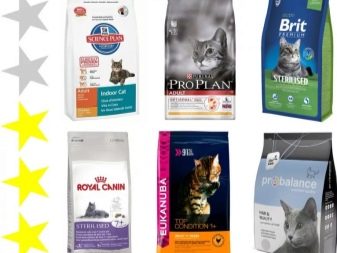

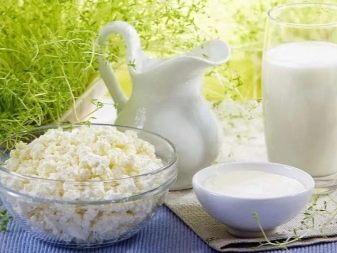
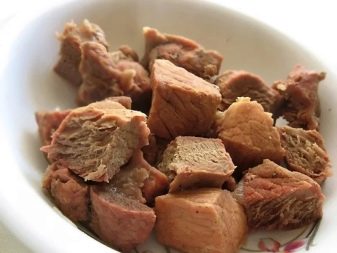
Hygiene and care
From the very birth, the pet should be taught to obligatory hygienic procedures. These include: cutting nails (if necessary), combing out tangles and old wool (2 times a week, in young individuals - daily), brushing teeth (at least 1-2 times a week), washing with shampoo (no more than 3-4 once a year if necessary), cleaning the ears from dirt (at least 2-3 times a week), rinsing the eyes - 2-3 times a week with a napkin (moistened with boiled water). It is often due to inadequate care that most skin, eye and ear diseases are formed.
For combing, it is better to use wooden combs with long sparse teeth. You should not buy a slicker jacket - it can harm the skin of the animal.
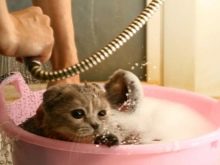
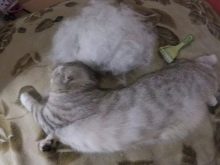
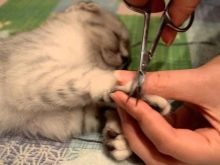
Upbringing
It may seem strange, but how you raise your pet depends on its lifespan. If you teach your cat which parts of the house you should not enter, where you should not climb, and what you should not gnaw on, you will save your pet from many accidents (poisoning, electric shocks, falling from the balcony, swallowing wires and snacking on house plants).
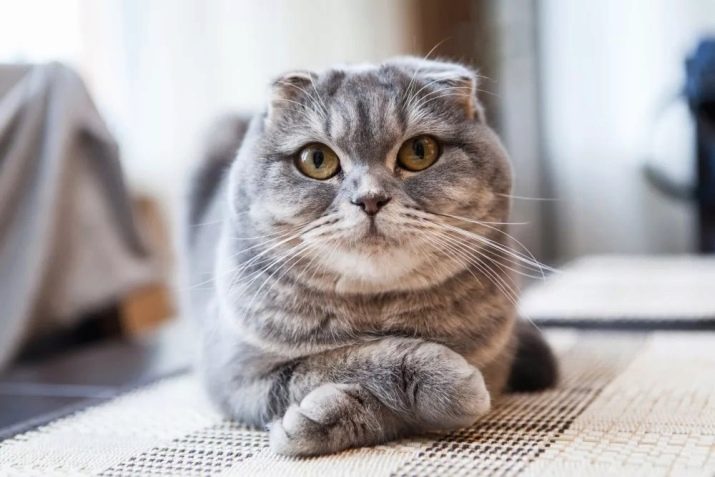
Active life
A sporty and active cat is a healthy cat with a minimum list of diseases. Try to load your pet with power loads from birth. Buy him some exercise machines, perches or harnesses where he can jump. In addition, you should definitely give him toys - they will not only raise the pet's mood, but also distract him from routine affairs, grind off his claws and fangs.
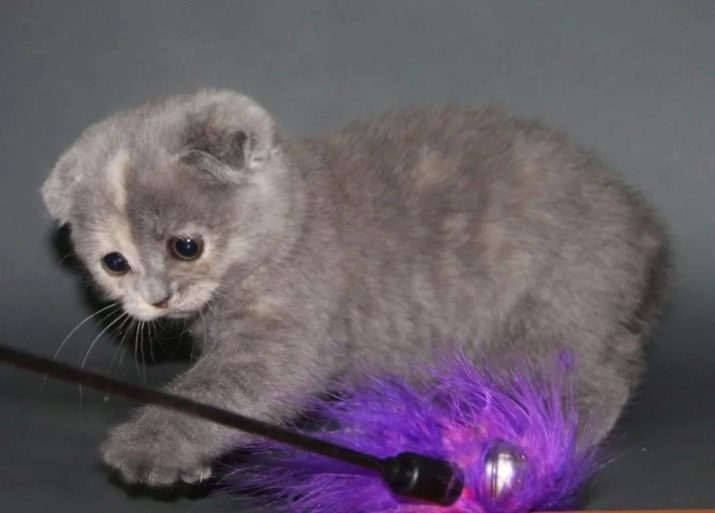
Happiness level
Scientists have proven that a positive attitude is just as beneficial for the longevity of living beings, as well as nutrition. To make your pet cheerful and happy, try to pay more attention to it. Set aside about half an hour every day for games, talk to the cat, even bother.
Cats love to be shown any attention to them. In addition, from the very beginning, try to build a correct dialogue with the animal - communicate with him, praise him for his tricks, sometimes feed him with a treat, let him sleep on your lap or clothes, iron him.
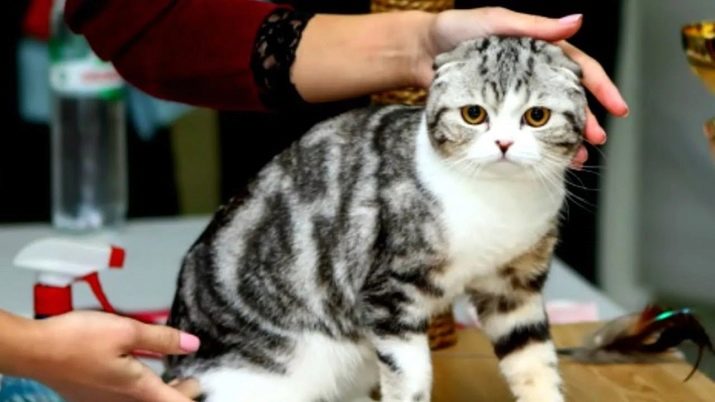
Veterinarian
Prophylactic visits to the veterinarian once every six months will definitely not harm your pet, but they can save you from many diseases. The doctor will be able to prescribe a suitable diet, determine the missing vitamins, can give directions for taking tests so that you can clearly see the condition of the animal.
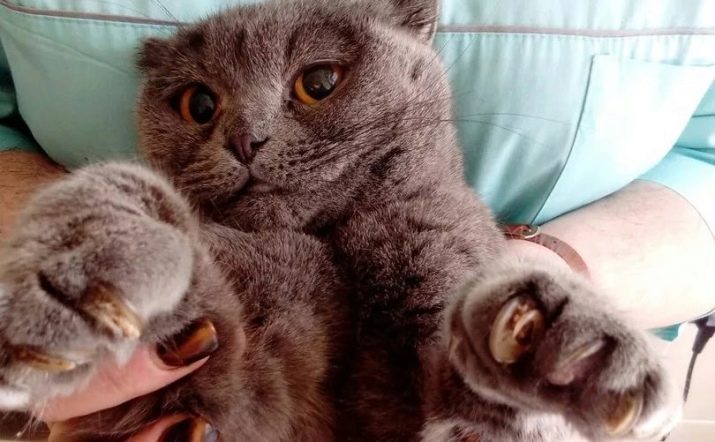
Sterilization
It is believed that castrated individuals live 2-3 years longer than unsterilized ones. Apparently, this depends on the fact that both the female and the male are in the most stressful situation in the mode of searching for a partner. After giving birth, stress affects cats extremely negatively, it makes them fearful, distrustful and aggressive. Not to mention the fact that pregnancy greatly weakens the body and, even with a balanced diet, makes it unstable against viral diseases.
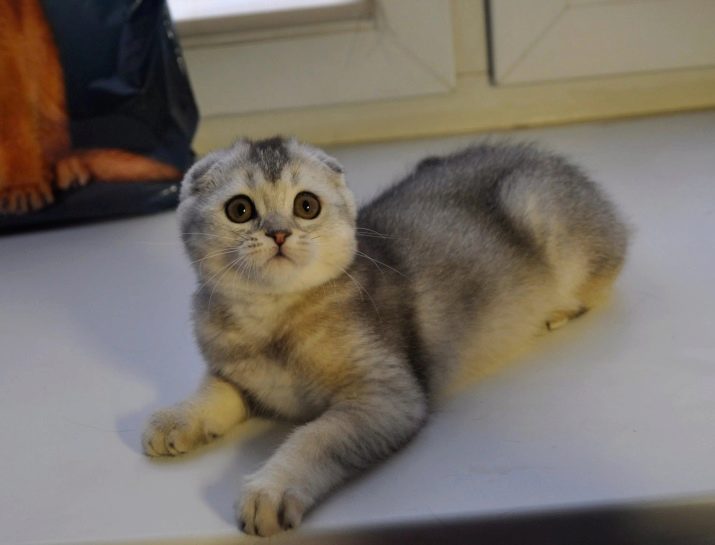
In simple words, only one thing is required of you - try to spend as much time as possible with your pet and monitor its behavior. At the first symptoms of any disease, injury or pathology, immediately contact an experienced veterinarian. This way you can prevent more than 90% of all possible diseases that shorten the life of a Scotsman.
Read on for interesting facts about Scottish Fold cats.

































A very cool breed.Super affectionate and smart, moderately naughty and playful, smart and incredibly beautiful!)
I completely agree with the above, especially about beauty, but I want to add that smart, interesting, loyal and affectionate are found among many breeds, many outbred individuals are especially distinguished by high intelligence. It does not depend on the breed, almost all cats are like that: funny, smart and charming, because CATS!))
My cat is unusually active and playful, very sociable, even with new people. But at the same time, she was terribly stubborn from childhood. She perfectly understands and knows what she must not do. But if you really want to, he will make endless attempts to achieve his goal. I would be so persistent ... love her.
My cat is 7 years old, I just can't imagine my life without her, although before her appearance I didn't pay much attention to cats, I loved dogs more. She was very playful at a young age, well, and now, if there is a mood, she simply will not disregard. I want to add that she is very smart, there were no problems with the toilet, and if she wants to regurgitate, she also does it next to her toilet. And if I come home from work in a bad mood, she will just lie down next to me and begin to purr. And they are very talkative, if only they could understand their language.
Has anyone removed a cat's teeth, cleaned tartar? Is it dangerous or not, how did you leave, is it worth it or not? Please tell us, otherwise tomorrow we will urgently go to the reorganization. I stopped eating dry food, it hurts to see.
My cat will turn 20 on May 13, I hope so. The best friend in my life, as it turned out. He has become old: he sleeps a lot, eats little. Whatever happens to him, I will try to extend his life as much as possible. Over the years, he brought me so much joy that nothing can be measured.
Everything is correct in this article. I have a very kind kitty 2 years old. One of the disadvantages is low activity and a tendency to be overweight. The fat tail appeared when she was a kitten. The character is amazing, but he does everything in his own way, he sits a little in his arms, but loves to be around. Emotionally positively colors my life!
About the fat tail, as you rightly said.
I have a half-scottish girl. Not at all affectionate - she does not allow herself to be taken, immediately breaks out and is scratched. Maybe lie next to him, leaning his elbows, and you start stroking, he lies enjoying, then suddenly he can bite (